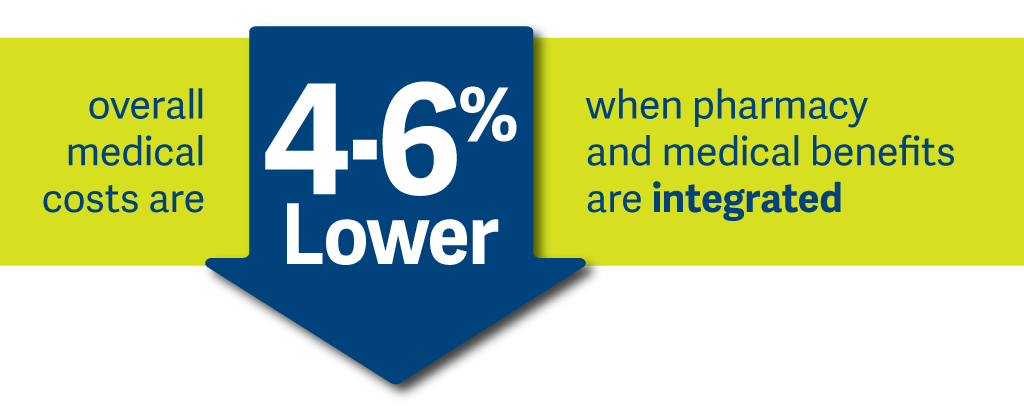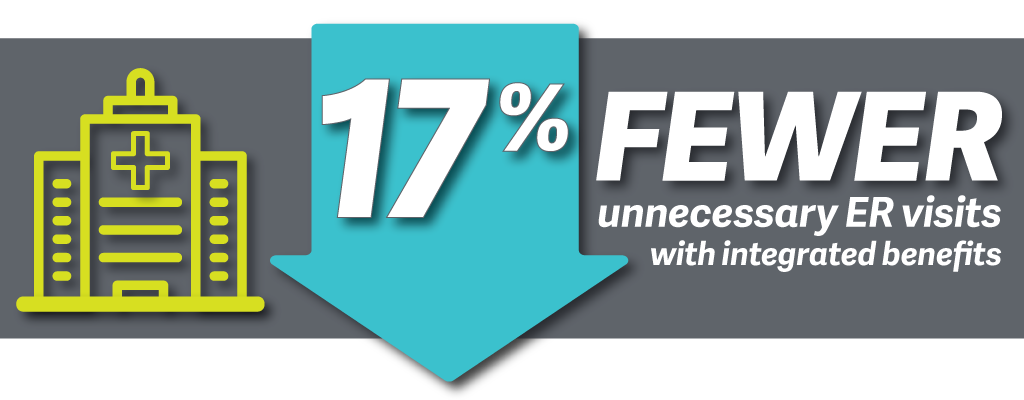
Combining Health and Pharmacy Benefits Means Better Health Care
June 02, 2023High-quality, affordable health care for all is a goal everyone can identify with. It’s a critical issue in our nation today, as it impacts all of us, including people with serious and chronic health conditions and those fortunate enough to enjoy excellent health.
But the reality is health care in the U.S. today is complex, often difficult to navigate, and expensive. A recent Kaiser Family Foundation poll found that 58% of Americans are worried about having to pay unexpected medical bills and close to half of all Americans are worried about paying their health insurance deductible and prescription drug costs1. High costs impact health. Some 29% of Americans report not taking their medicine as prescribed because they could not afford to pay for it2.
While there are no simple answers, having medical and pharmacy benefits fully integrated is a critical step in the right direction. We firmly believe that integration is safer for members, easier for employers to manage, results in improved health care, and costs less overall.

Clinicians See the “Whole Picture” With Integrated Benefits
Let’s start with the basics. Integrated benefits mean a member’s health coverage and pharmacy coverage are provided by the same health plan. The pharmacy benefit is used more than any other benefit in a health plan. When medical and pharmacy benefits are integrated, a clinical team sees the “whole picture” of a member’s health. Data is accessible in real time.
Integration enables a care manager to see a member’s claim before speaking to them, or a utilization review pharmacist to see a member’s prescription claims when reviewing a prior authorization for a medication. This saves time, which can be critical in a medical situation, and also means that our clinical team has all the information needed to advise on medical questions and concerns. We’re passionate about integrated benefits because we see firsthand that healthcare works best as a team effort — when medical and pharmacy teams collaborate, medication adherence is improved, patients experience better health outcomes, and emergency room visits and even hospital admissions are reduced.
Why A Team Approach Works Best
To illustrate the importance of integration in medicine, we can look to diabetes as an example. Diabetes is prevalent in the U.S., affecting over 10% of the population. The number jumps to 29% in people over the age of 65. When a person with diabetes who has integrated benefits shows up at an emergency room, the health plan’s care manager is able to access medical and pharmacy data in real time. Did the patient miss a recent medical appointment, or fail to pick up their prescription? Is the patient taking advantage of educational programs on their health condition? Would remote glucose monitoring by a pharmacist be helpful? Are there any gaps in care? A collaborative team approach can help the patient adhere to their prescriptions and perhaps get extra support from a nutritionist or social worker. The clinicians work together towards two goals – a better health outcome for the patient, and the prevention of future emergency room visits.
Without integrated benefits, a patient’s care is likely to be fragmented. There is a medical chart and prescription data, but no clinical team who can see the whole picture, in real time.
Beyond Better Health Outcomes, Lower Costs3
Integrating medical and pharmacy benefits leads to real savings, for both the employer and the individual member. In our experience, overall medical costs are 4-6% lower when the pharmacy and medical benefits are integrated.

Here are three key areas where integration is key:
Emergency Room visits account for an estimated $8.3 billion in spending each year in the U.S. When clinical teams have a full picture of each member’s health story, including physician visits and medication regimens, many types of ER visits can be avoided, saving money, time and worry for patients, and preventing patients’ exposure to other illnesses. Integrated benefits result in 17% fewer instances of all unnecessary ER visits, at an average cost of $1,695 per visit3.

Chronic conditions, such as diabetes, heart disease and depression, account for $1.1 trillion in health care costs, and $2.6 trillion in lost productivity each year in the U.S. For members with diabetes, integrated medical and pharmacy benefits results in 19% fewer ER visits, with an average cost of $1,695 per visit. In addition, integration reduces preventable admissions by 13%. A hospital admission costs an average of $13,9203.

Specialty Drugs are prescribed for complex, chronic conditions. They are used by only about 2% of the population but account for 50% of total drug spend. Through specialty drug management, health insurers can see both medical and pharmacy data. This means the clinical team can determine if the medication is being prescribed correctly, if the correct dosage is being administered, and ensure there is not waste3.

Less Administrative Hassle for Employers, Easier for Members
Employers report that having integrated benefits is easier to manage, smoother to implement, with one point of contact for any questions or concerns. Members carry one card, with one phone number. If a member needs to call for assistance, the professional responding to their call has access to both medical and pharmacy data.
With integrated benefits from Univera Healthcare, employers and members have a team behind them, with 48 full-time pharmacists and 17 medical directors. These team members review claims, consult with care managers to make sure patients are adhering to their care plans and prescription regimens, monitor for drug interactions, and verify that the most appropriate medical or pharmacy drug benefit is being applied based on medical guidelines. By reviewing a member’s complete medical history, we can identify additional programs, assessments, and services the member may be eligible for. These additional programs often improve health outcomes and can lead to cost savings as well.
Integrated benefits allow our clinical team to coordinate directly with the patient’s caregivers. Dedicated pharmacists and medical directors who can see “the whole picture” of a member’s health journey, can make a big difference.
Contact us today to learn more about the great outcomes our team has achieved through integration and the comprehensive management programs that come with every integrated plan.
Sources
- ”KFF Health Tracking Poll – March 2022: Economic Concerns and Health Policy, The ACA, and Views of Long-term Care Facilities” Kaiser Family Foundation, March 2022
- ”KFF Health Tracking Poll – February 2019: Prescription Drugs,” Kaiser Family Foundation, March 2019
- Comparison of Book of Business integrated medical and pharmacy employer groups vs. medical-only employer groups.
